

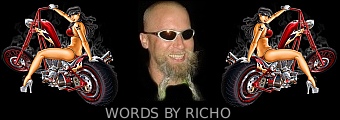


|

|
|
|
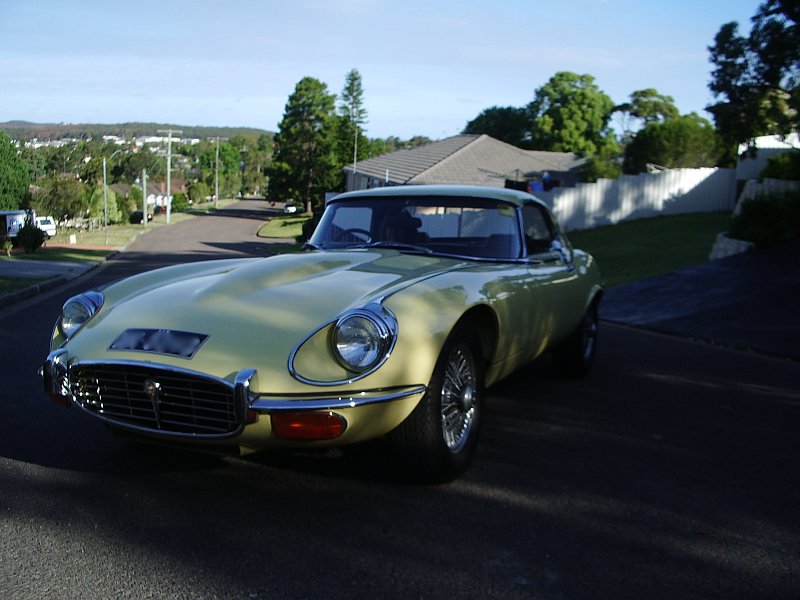
Since its introduction in 1961, the E-type has been critically acclaimed as having some of the finest lines ever penned for an automobile. Even today, the long nose and short rear deck lid remain the standard by which other sports cars are judged and if imitation is the sincerest form of flattery then Jaguar should feel very flattered indeed.
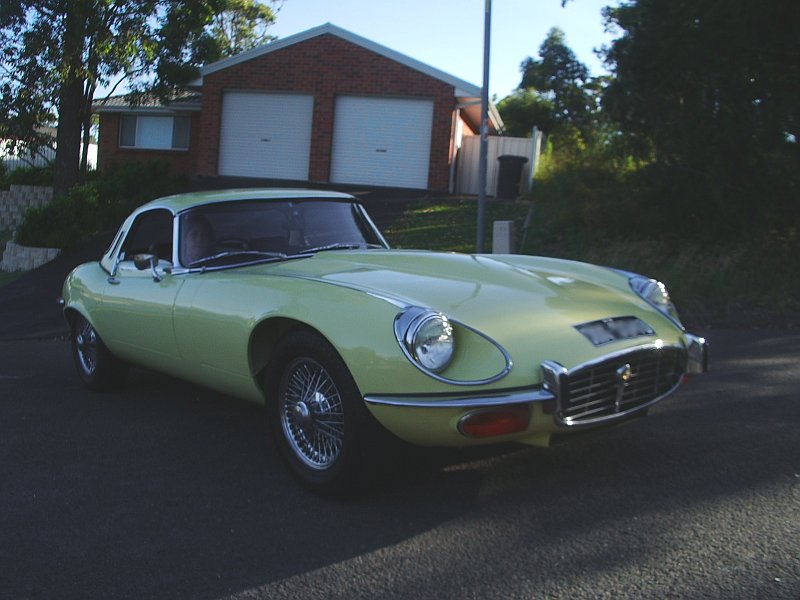
Much of the design inspiration came from its racing predecessor, the D-type. With the E-type's monocoque chassis construction, it was both longer and lower than its predecessor and its racing heritage was unquestionable.
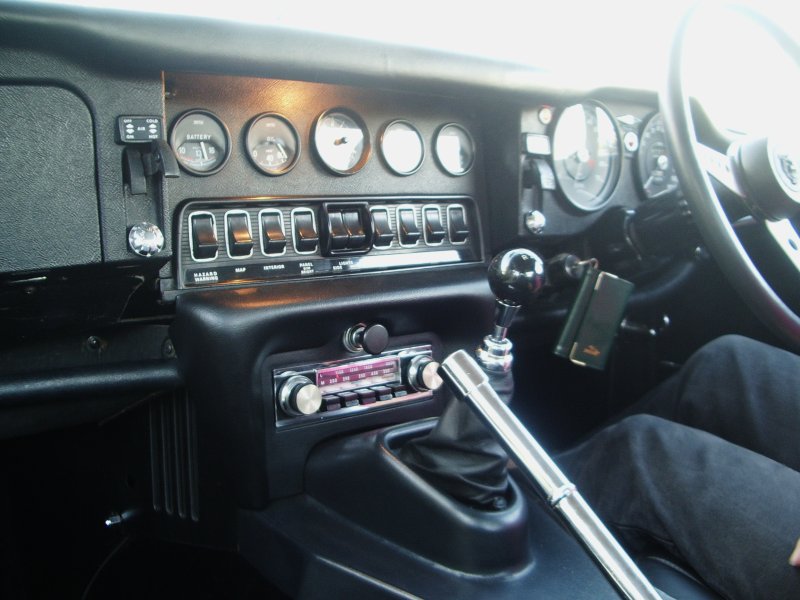
Ten years and numerous tweaks later, Jaguar launched their awesome V12 engine in its E-type, transforming it with an infusion of turbine-like torque and horsepower. Along with the engine, other modifications were made including power steering and power brakes.
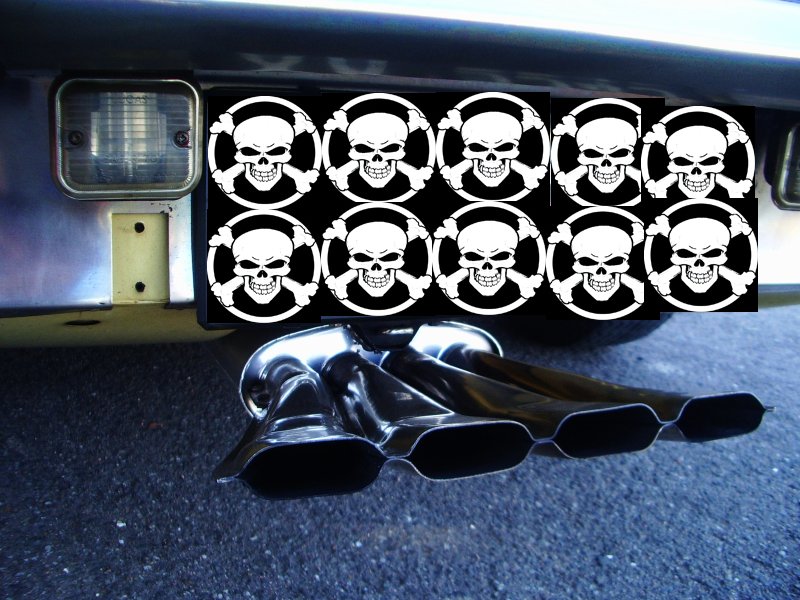
The result was a very fine and sophisticated touring car. The primrose yellow Jaguar E-type Roadster (with rare factory hardtop) shown here has original paint. Its black leather interior has been recently reupholstered and is in immaculate condition. Overall, the car has been very well maintained and has all the correct trim, including the original chrome wire wheels and reproduction Dunlop Aquajet tyres. It is perfectly suited for Jaguar club events and cruises. The four fan exhaust and sealed beam headlights denote this vehicle as one of the first series 3 cars.
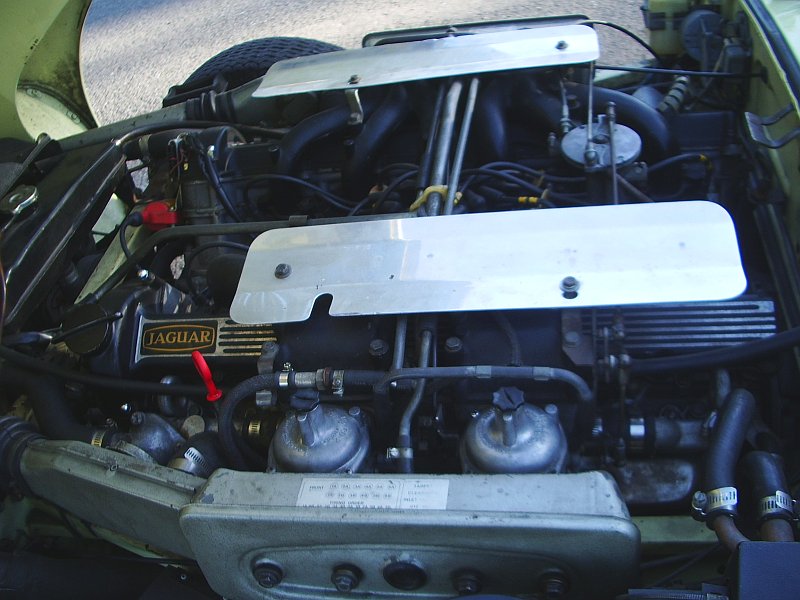
The Jaguar E type, also known as the XK-E, brought style and performance together to create a mass-produced supercar. The road-going sports car was conceived in 1956 as a replacement for the D-type then in production. In March of 1961 the E-Type was officially introduced to the world at the Switzerland Motor show in Geneva.
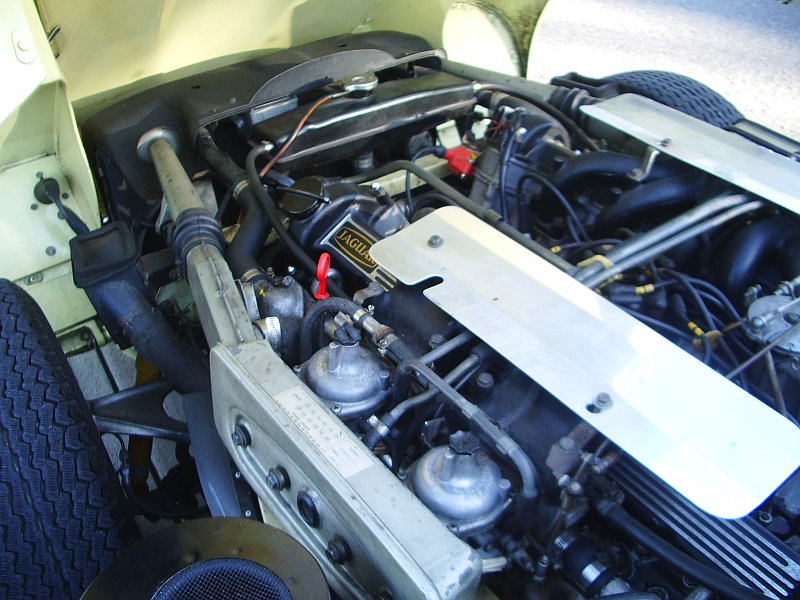
It's design was created by an aerodynamic engineer named Malcolm Sayer. The front engine, rear-wheel drive vehicle featured a moncoque body and a tubular front chassis. The original six-cylinder double-cam engine had three SU carburetors and produced 265 horsepower. The suspension was Jaguar's famous independent type with disc brakes on all four wheels. It brought together the best of aerodynamics coupled with the latest technology and was propelled by a potent engine (for its day). The vehicle was not only fast, it offered excellent performance and handling as well. Some of the most common complaints it received were the cabin being too cramped and that it suffered from poor ventilation.
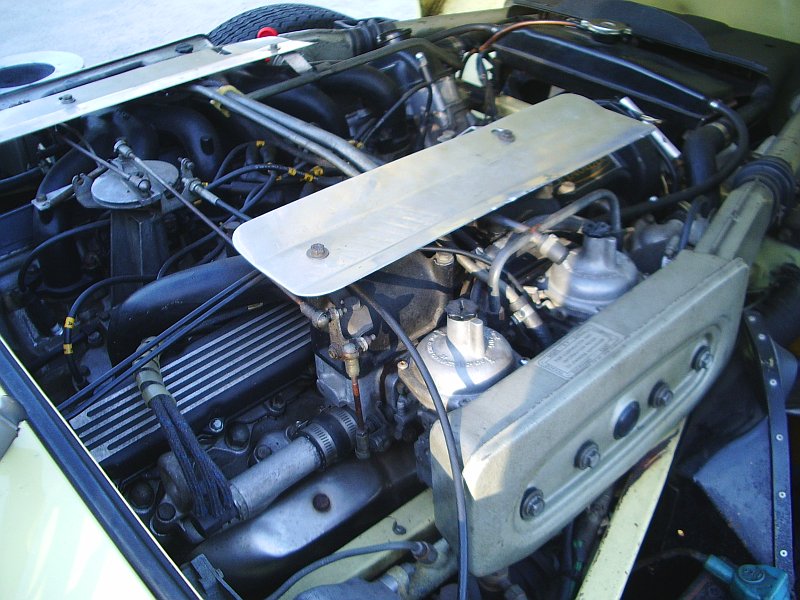
The E-Type was a popular vehicle. It was fast, performed well and was competitively priced. Due to the United States safety and emission regulations though some of the horsepower was lost in keeping the engines compliant. The headlamp covers were also removed prior to the close of the 1960's.
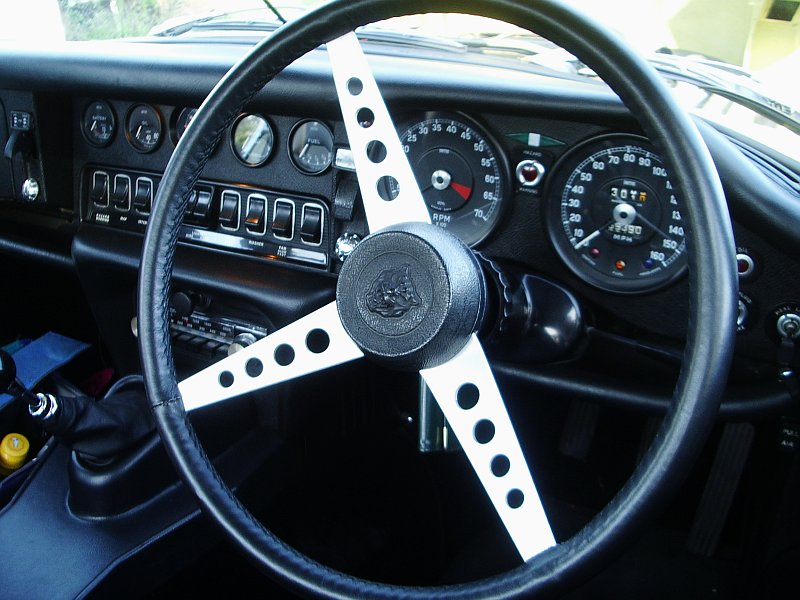
A 4.2-liter engine and synchromesh gearbox was introduced in 1964. In 1966, the 2+2 coupe was introduced and featured an even longer wheelbase. Unfortunately the Series II cars were not as quick as their predecessors. The Series III, however was a different story. Powered by an awesome lump of V-12 engine they were once again easily able to propel the E-Type to over 145 miles per hour.
Production for the E-Type ceased in 1975, after 72,520 examples were produced. It was replaced by the XJ-S; a vehicle that was larger, heavier and not as visually appealing.
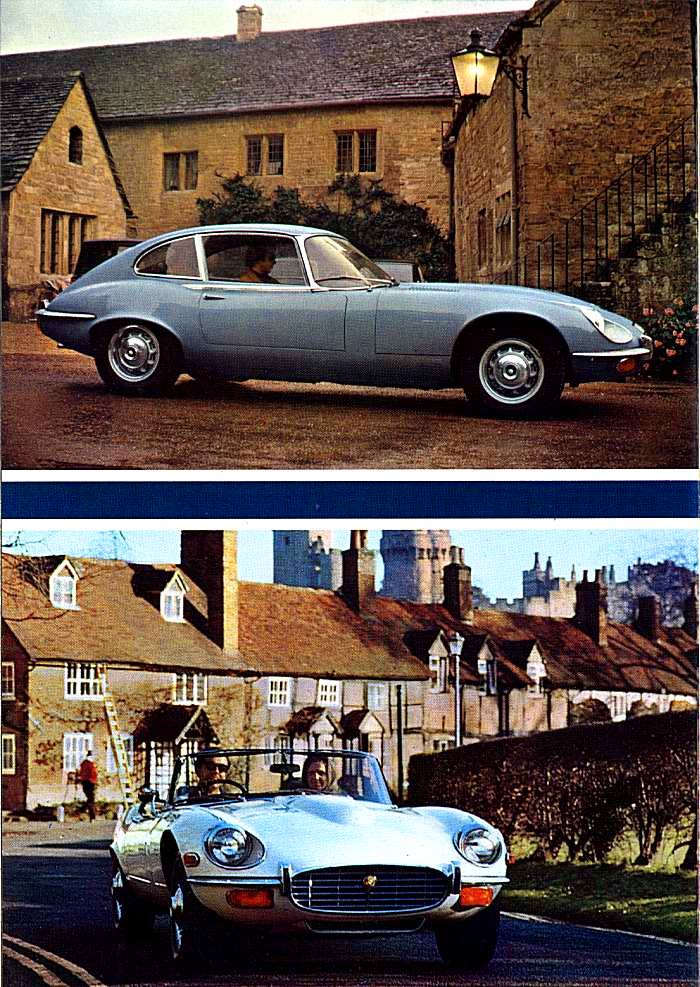
THE ENGINE Jaguar's V12 was one of the premiere powerplants of the 1970s and 1980s and was a V12 piston type engine. The engine first seen in the Series 3 E-type of 1971 was based loosely on an earlier design intended for a Le Mans car, the ill-fated Jaguar XJ13. The V12 was only Jaguar's second engine design to go into production in the history of the company. It had a SOHC 2-valve head with flat combustion chambers.
The original 5.3 L (5343 cc) version had an oversquare 90 mm bore and 70 mm stroke. It produced 210 kW (285 hp) (245 to 299 bhp depending on emission controls and compression ratio) and 400Nm (295 Lb-Ft) in fuel-injected form. Right from the start of production in 1971 for the Series 3 E-Type, the V12 engine had Lucas OPUS electronic ignition. This system was used until 1982 when the Lucas CEI system was introduced. When first issued, the OPUS ignition amp unit was secured directly to the engine between the cylinder heads and had problems due to overheating, especially in cars imported to warmer climate countries. Later cars had the ignition amplifier moved away from the engine where it could get enough air flow to remain cool. Originally the V12 was supposed to get an advanced Fuel Injection system under development by Lucas. When that was delayed, the V12 as used in the Series 3 E-Types and the S1 XJ12 cars had four Zenith-Stromberg side draft carburetors. They are positioned two per cylinder bank and are fed via cold air induction snorkles that extend right to the rear of the grille. In the middle of 1975 the V12 engine used in the S2 XJ12 and the new XJ-S had a Lucas fuel injection system which was based around the famed Bosch D-Jetronic system.
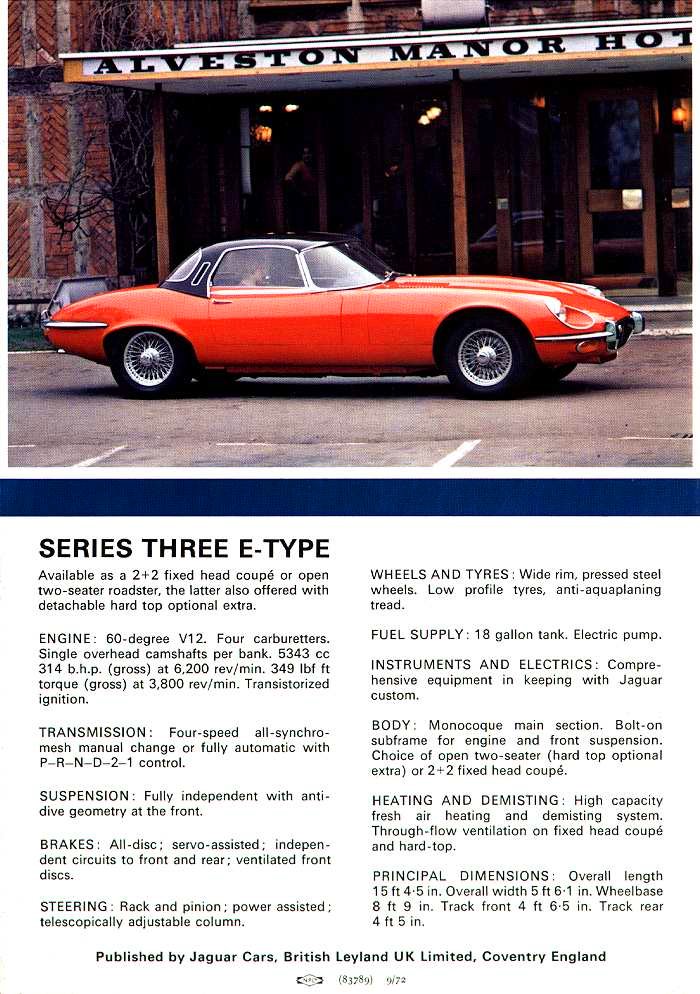
The E-type was initially designed and shown to the public as a grand tourer in two seater coupe form (FHC or Fixed Head Coupe) and as convertible (OTS or Open Two Seater like we have here). The 2+2 version with a lengthened wheelbase was released several years later. The model was made in 3 distinct versions generally referred to as "Series 1", "Series 2" and "Series 3". A transitional series between Series 1 and Series 2 is known unofficially as "Series 1½". In addition, several limited-edition variants were produced: * The "'Lightweight' E-Type" which was apparently intended as a sort of follow-up to the D-type. Jaguar planned to produce 18 units but ultimately only a dozen were reportedly built. Of those, one is known to have been destroyed and two others have been converted to coupe form. These are exceedingly rare and sought after by collectors.
* The "Low Drag Coupe" was a one-off technical exercise which was ultimately sold to a Jaguar racing driver. It is presently believed to be part of the private collection of the current Viscount Cowdray.
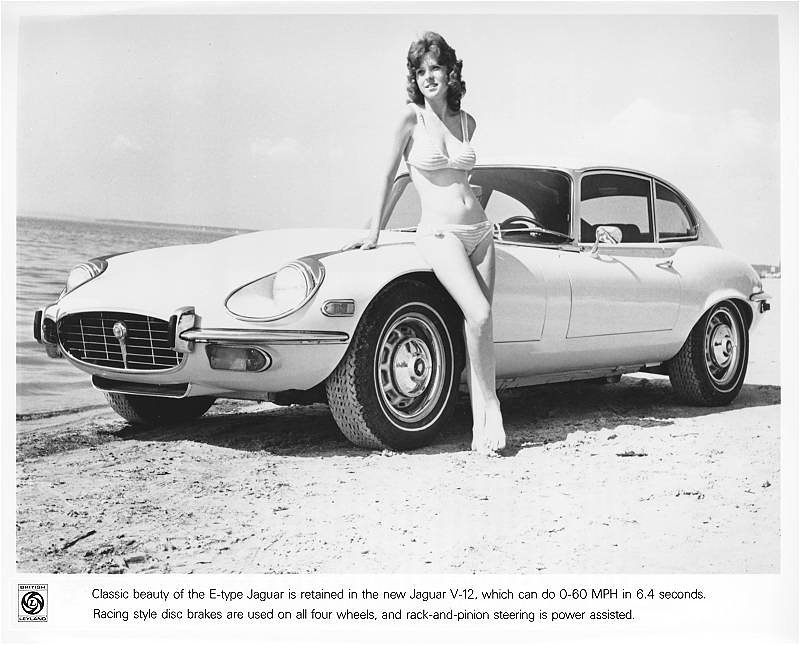
Series 3 (1971-1974)
A new 5.3 L 12-cylinder Jaguar V12 engine was introduced, with uprated brakes and standard power steering. The short wheelbase FHC body style was discontinued and the V-12 was available only as a convertible and 2+2 coupe. The convertible used the longer-wheelbase 2+2 floorpan. It is easily identifiable by the aggressive, slatted front grill in place of the mouth of earlier cars, flared wheel arches and a badge on the rear that proclaims it to be a V12. There were also a very limited number of 4.2 litre six cylinder Series 3 E-Types built. These were featured in the initial sales literature. It is believed these are the rarest of all E-types if indeed any remain worldwide.
|

Enjoy this article ? The site ? Would you buy me a beer for my efforts?


|

|

|